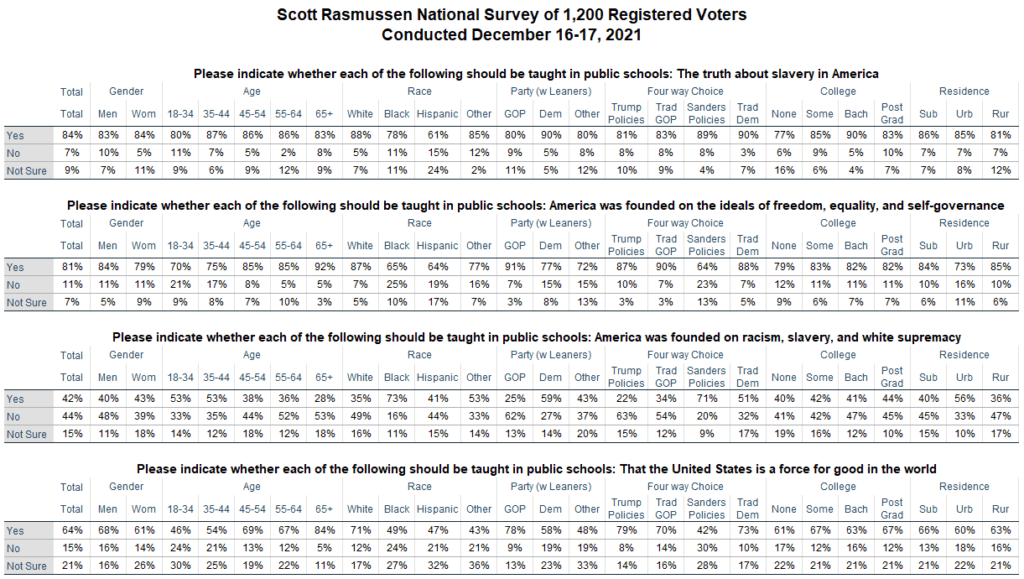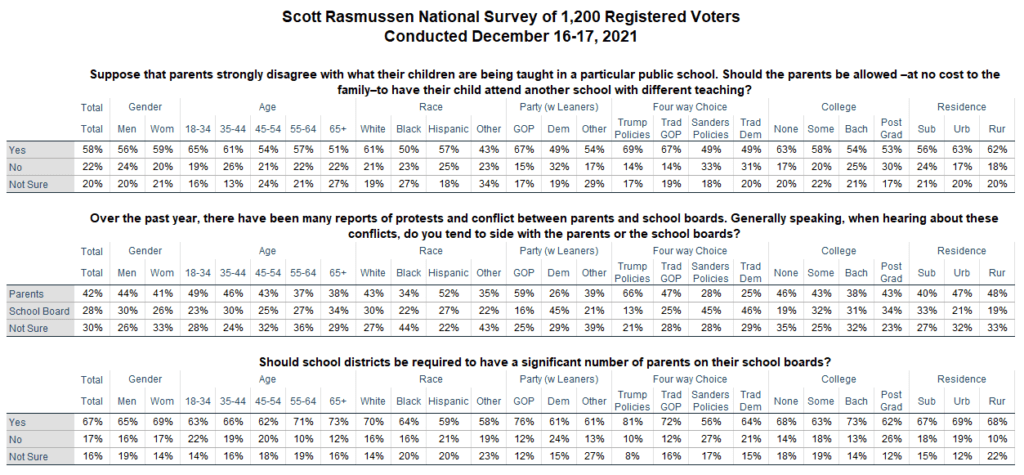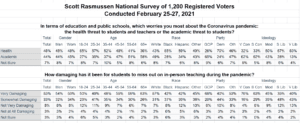Fifty-three percent (53%) of voters believe the loss of educational opportunities from shutting down schools is a bigger threat to children than the possibility of getting COVID. A Scott Rasmussen national survey found that 31% disagree and believe COVID is the bigger threat.
Republicans overwhelmingly see the loss of educational opportunities as the bigger threat. Independent voters agree by a 2-to-1 margin.
Democrats, however, disagree. By a 47% to 35% margin, those in President Biden’s party see the possibility of getting COVID as the bigger threat.
The survey also found that 36% believe it should be against the law for unvaccinated Americans to fly on commercial airlines. Forty-five percent (45%) disagree.
There is also a significant divide on this question. Democrats, by a 2-to-1 margin, believe it should be against the law for the unvaccinated to fly. Republicans disagree by an even wider margin (60% to 24%). Among Independents, 30% believe it should be against the law while 49% disagree.
SIGN UP to receive Scott’s free email newsletter.
CHECK OUT Scott’s latest polls.
Note: Neither Scott Rasmussen, ScottRasmussen.com, nor RMG Research, Inc. have any affiliation with Rasmussen Reports. While Scott Rasmussen founded that firm, he left more than seven years ago and has had no involvement since that time.
Question 1:
What is the bigger threat to children: the possibility of getting COVID or the loss of educational opportunities from shutting down schools?
31% Getting COVID
53% Loss of educational opportunities
16% Not sure
Question 2:
Should it be against the law for unvaccinated Americans to fly on commercial airlines?
36% Yes
45% No
19% Not sure
Question 3:
If you tested positive for COVID, how likely is it that you would recover quickly with only minor symptoms?
39% Very likely
35% Somewhat likely
7% Not very likely
5% Not at all likely
14% Not sure
Methodology
The survey of 1,000 Registered Voters was conducted online by Scott Rasmussen on January 3-4, 2022. Field work for the survey was conducted by RMG Research, Inc. Certain quotas were applied, and the sample was lightly weighted by geography, gender, age, race, education, internet usage, and political party to reasonably reflect the nation’s population of Registered Voters. Other variables were reviewed to ensure that the final sample is representative of that population.
The margin of sampling error for the full sample is +/- 3.1 percentage points.












